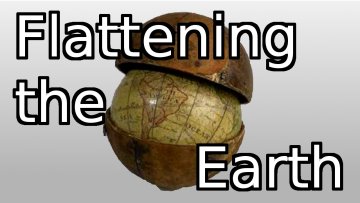InFoMM CDT Group Meeting
Abstract
Roxana Pamfil
Analysis of consumer behaviour with annotated networks
Rachel Philip
Modelling droplet breakup in a turbulent jet
Asbjørn Riseth
Stochastic optimal control of a retail pricing problem
15:00
On Ring Learning with Errors and its uses in cryptography
Abstract
We introduce Learning with Errors and Ring Learning with Errors, two hard
lattice problems which are widely used for security of Homomorphic
Encryption schemes. Following a study we conducted comparing four such
schemes, the best scheme was the so-called BGV scheme, introduced by
Brakerski-Gentry-Vaikuntanathan in 2012. We present it as an example of a
ring-based homomorphic scheme, discussing its number theoretic
optimisations.
15:00
Ouroboros: A Provably Secure Proof-of-Stake Blockchain Protocol
Abstract
We present “Ouroboros,” the first blockchain protocol based on proof of stake with rigorous security guarantees. We establish security properties for the protocol comparable to those achieved by the bitcoin blockchain protocol. As the protocol provides a “proof of stake” blockchain discipline, it offers qualitative efficiency advantages over blockchains based on proof of physical resources (e.g., proof of work). We showcase the practicality of our protocol in real world settings by providing experimental results on transaction processing time obtained with a prototype implementation in the Amazon cloud. We also present a novel reward mechanism for incentivizing the protocol and we prove that given this mechanism, honest behavior is an approximate Nash equilibrium, thus neutralizing attacks such as selfish mining.
Joint work with Alexander Russell and Bernardo David and Roman Oliynykov
From gigantic hanging tapestries to small pocket globes, the Ashmolean covers a whole range of navigational equipment. In the second of our Random Walks films featuring mathematicians let loose in the Ashmolean Museum, Vicky Neale from Oxford Mathematics demonstrates that she knows her place in the world. Through interactive examples that can be imitated at home, Vicky demonstrates the difficulties that cartographers have faced throughout the centuries.
16:00
Mathematics and Auction Design
Abstract
Mathematical methods are increasingly being used to design auctions. Paul Klemperer will talk about some of his own experience which includes designing the U.K.'s mobile phone licence auction that raised £22.5 billion, and a new auction that helped the Bank of England in the financial crisis. (The then-Governor, Mervyn King, described it as "a marvellous application of theoretical economics to a practical problem of vital importance".) He will also discuss further development of the latter auction using convex and "tropical" geometric methods.
16:00
Chaos and wild chaos in Lorenz-type systems
Abstract
Hinke Osinga, University of Auckland
joint work with: Bernd Krauskopf and Stefanie Hittmeyer (University of Auckland)
Dynamical systems of Lorenz type are similar to the famous Lorenz system of just three ordinary differential equations in a well-defined geometric sense. The behaviour of the Lorenz system is organised by a chaotic attractor, known as the butterfly attractor. Under certain conditions, the dynamics is such that a dimension reduction can be applied, which relates the behaviour to that of a one-dimensional non-invertible map. A lot of research has focussed on understanding the dynamics of this one-dimensional map. The study of what this means for the full three-dimensional system has only recently become possible through the use of advanced numerical methods based on the continuation of two-point boundary value problems. Did you know that the chaotic dynamics is organised by a space-filling pancake? We show how similar techniques can help to understand the dynamics of higher-dimensional Lorenz-type systems. Using a similar dimension-reduction technique, a two-dimensional non-invertible map describes the behaviour of five or more ordinary differential equations. Here, a new type of chaotic dynamics is possible, called wild chaos.


